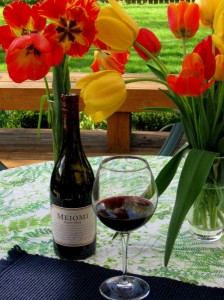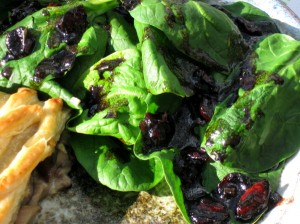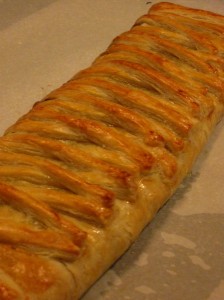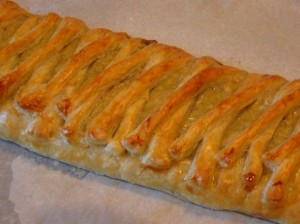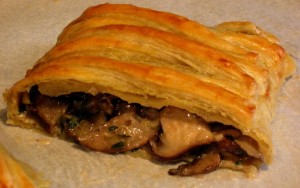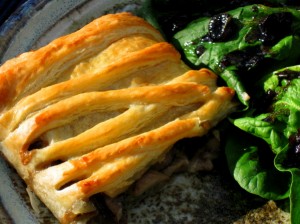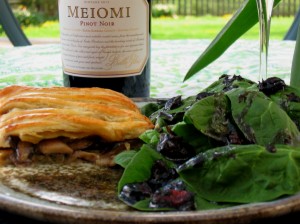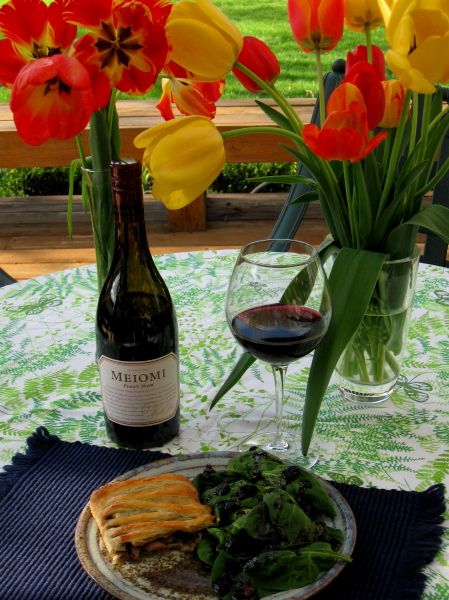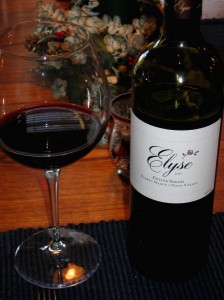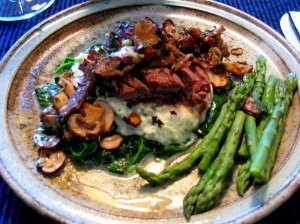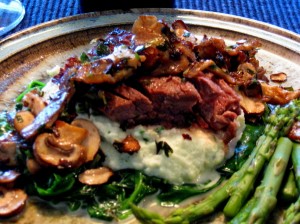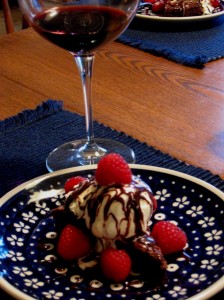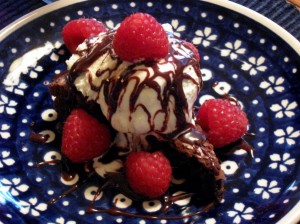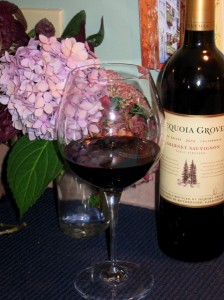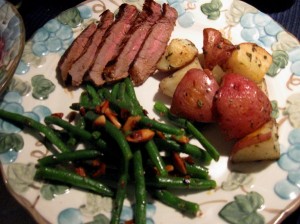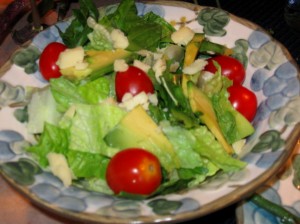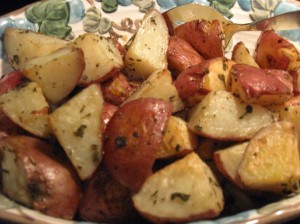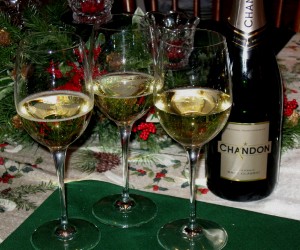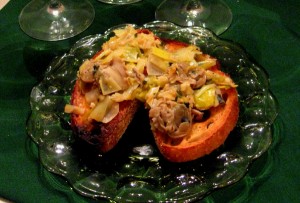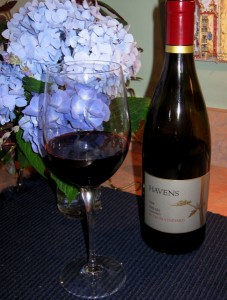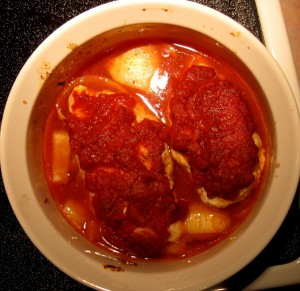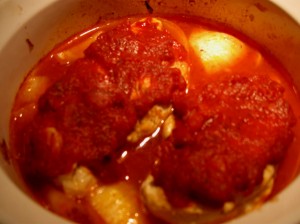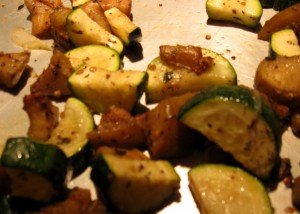May 23 2013
Perfectly Paired Pinot Noir
Pinot Noir over the last decade has been a red wine varietal that has triggered passionate conversations, some of which have been full of content and others full of bandwagon generated fluff. The finicky grape is one that requires a careful climate, a rich soil and a talented hand in the ultimate making of its wine. In other words, the grape more often than not demands perfection.
As a wine its consistency and texture quickly reveal the growing season’s tale, how heavy was the vintner’s hand and without shame the age of its vine. But despite the challenges, risks and pitfalls of growing this varietal, its profile as a wine is worth it and can vary from light-bodied to medium-bodied, old vines to young, a product of cold, bay-adjacent or coastal AVAs and the list goes on. There is plenty of variance in the varietal but it is certainly a red wine that is wonderful to enjoy in last days of spring and early warm days of summer.
Winemaker Joseph Wagner grew up among the vines as his family has been part of the wine industry since the 1880’s with their wines at Caymus. For over the last decade, he, as the owner and winemaker at Meiomi and Belle Glos wines, has been sharing the wonders of Pinot Noir with the public whether by vineyard specific bottlings or as with Meiomi, a Pinot Noir wine that collects fruit from Sonoma County, Monterrey County and Santa Barbara County. These three coastal vineyards link together in one bottle of wine to show off the depth of the varietal and bring something exceptional to your glass.
I have featured Meiomi in the past, but for this article, I elected to feature Meiomi’s 2012 vintage which can be found today on most people’s favorite wine shop’s shelf. Despite the wine’s youth, once in the glass your nose is greeted right off the bat by rich candied cherries with a hint of cedar coupled with aromas of clove and allspice. The bouquet of the wine is romantic and coy. With aging, once the wine has shed its youth, its nose will become heady and seductive. The palate is not disappointed with this wine because it shows off its accessibility today as well as how the wine will age with time. Juicy cherries and tart, sweet red plum clings to the palate long after the wine is gone. A gentle finish of creamy milk chocolate with a hint of vanilla makes one wonder if that is not a bit of dessert at the back of the palate. Similarly the wine boasts just the right organic amount of acidity to add zip and zing to the palate’s experience thus allowing the 2012 Meiomi Pinot Noir to flaunt its youth with pride. Do not be fooled by the wine’s youth. It boasts a certain swagger so it is not as light-bodied as one would initially anticipate. Similarly, the 2011 Meiomi Pinot Noir received a rating of 92 points from the Wine Spectator. The 2012 vintage, despite being young, simply feels like it will be a bigger year. Generally my sensitive palate’s intuition is correct in these assessments.
All in all, this is an artful wine that is accessible and enjoyable now. If you can muster some self restraint, setting aside a bottle or two to age will well-reward your patient palate.
Pinot Noir enjoys being served in various occasions. It can accompany a light dinner or a late afternoon lunch with friends. Either way it is a wonderful companion to your meal. The varietal’s natural acidity lends it to a variety of fare that does not require a heavy piece of beef to accompany it. Pinot Noir can have a slight earthiness to it so it also is a natural pairing with many spring vegetables making it seasonally appropriate for all those early cool weather crops coming out of the backyard garden: mushrooms, spring onions, chives, spinach, etc. As such, this article’s menu presents:
- · Exotic Mushroom Strudel with Candied Cranberry Balsamic Spinach Salad
Spinach may be bitter but it offers a certain earthiness to compliment Pinot Noir. While my mushroom strudel was baking in the oven, I decided to play and create a salad dressing to go with this wine and meal.
I really wanted to accentuate the savoriness of the wine and so I reduced balsamic vinegar to a specific point where the dressing would develop a rich caramelized sweet flavor yet maintain a respectable amount of acidity. During this process, I added dried cranberries to plum. Once sufficiently reduced, I added ¼ cup olive oil, minced shallots, chopped chives and lemon thyme from the garden, a dash of Dijon mustard, a dash of red raspberry vinegar and a sprinkle of sea salt at the end.
The result? Here is your unexpected “wow factor”. Simple seasonally fresh spinach leaves suddenly deliver a knock out punch of savory flavor. With the wine it expectedly neutralizes the wine’s acidity allowing its cherry flavors to augment every bite and sip.
To create a mushroom strudel, I created a saute of oyster, crimini and shitake mushrooms with minced shallot, garlic, chives, lemon thyme and regular thyme. On puff pastry, I placed a layer of triple cream blue cheese and then laid the mushroom mixture on top. It is important to select your cheese carefully as too much moisture will make a mess during baking. The puff pastry is then wrapped over the mixture and remaining pastry is sliced and placed to create an attractive lattice. Brushed with a beaten egg, the strudel bakes in the oven. Upon completion it emerges fragrant and attractive.
The 2012 Meiomi loves the buttery nature of puff pastry. Its finish explodes onto the scene almost decorating the palate with dessert as the flavors of milk chocolate and vanilla race forward to envelope the wine’s otherwise predominant cherry flavors. Similarly, the strudel has soft, decadent flavors that mirror the personality of Pinot Noir. Blue cheese is not overwhelming but melds intuitively with the mushroom medley’s earth nature. Buttery nature of the cheese and puff pastry encourage the rich attributes of the wine which will also continue to emerge with continued bottle aging. For now the pairing is enough to invoke the simple seasonal sustainability of a chilly spring afternoon in Provence: that in and of itself is worth recreating.
Wine is a break from reality. Not so much because of its alcohol content, but because of the art that each winemaker puts into a vintage. Reward the winemaker’s effort with a thoughtful food pairing and the dining landscape is electrified. And at that point, who knows where your meal will transport you to. Regardless, that is worth a daydream or two.
Comments Off on Perfectly Paired Pinot Noir

